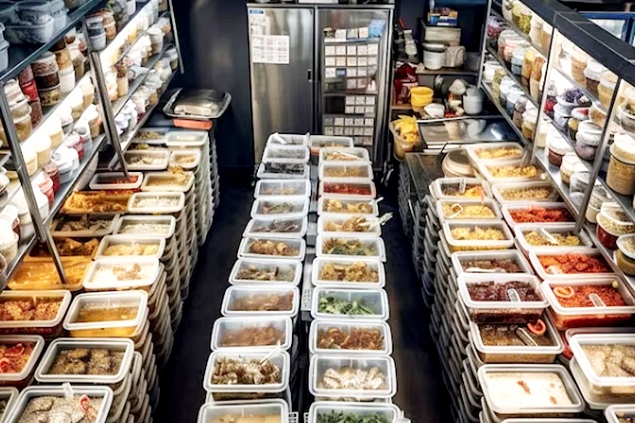
Complex food supply chains today rely on many suppliers to meet consumer demands. Moreover, as food safety regulations impact the industry, companies are implementing new ways to bring food products to market safely. But what do you do when a supplier fails to integrate into your food supply chain? The supplier's failure becomes much easier to navigate when you are configured to be agile, informed, and open to innovative solutions. This is the opinion of Peter Hull, from the University of Bristol, who has made several recommendations in his work titled "What to Do When a Supplier Fails in Your Food Supply Chain," published in Food Logistic Magazine.
High-Quality Data
No matter how well-organized they are, supply chains do not always go as planned, and when you find yourself with an unmet supply need, you'll need to use high-quality data to pivot quickly and find new solutions.
Let's face it; supplier failure is inevitable. The Coronavirus pandemic showed supplier failure on an urgent scale, but supplier failure can occur when a supplier can no longer meet your company's needs in terms of budget, schedule, regulations, or a variety of other factors.
Regardless of the specific reasons, there will come a time when your plans and expectations for a supplier are not met, and you need a plan for that moment. Thus, supplier failure becomes much easier to handle when you are configured to be agile, informed, and open to innovative solutions.
The first step to achieving this state of readiness is to have high-quality data about suppliers on which to base your decisions. Trustworthy data can support visibility and present new solutions that you may not have considered before. When pivoting after a supplier failure, we recommend working with new suppliers and engaging quickly.
It's Better with Others
When it comes to assessing whether a new supplier is right for you, look for both quantitative and qualitative markers of their credibility. In this way, you can reframe supplier failure as an opportunity to reevaluate the quality of supplier data, current supplier networks and relationships, optimization areas, and cost savings, including quality, risk, sustainability, or diversity goals.
There should be no need to spend hours or days checking suppliers. There are technological advancements in the industry driven by artificial intelligence (AI) and machine learning (ML) that allow you to perform data analyses that provide useful insights.
The larger the group of suppliers that needs to be considered for any procurement effort, the more robust enabling technology must be. Internet searches are a poor solution when trying to meet the complex and nuanced requirements of the supplier.
Even traditional supplier databases and portals leave much to be desired. They are static and fail to address sustainability innovations since they only contain already known suppliers and their already known capabilities that may have expanded over time.
Instant visibility throughout the organization, along with enriched supplier-provided information, allows for the formation of better relationships with third parties more quickly.
The first step in finding a supplier with specialized or sustainable capabilities is to create a shortlist of qualified suppliers, and this process is easier when you start with a trusted, comprehensive, and easily searchable supplier.
After verifying that the supplier data is of high quality, here are ways to use that data to quickly recover losses caused by the failure of the former supplier.
Operational Flexibility
When unprecedented situations arise, project details may be needed to most efficiently achieve objectives. Considerations such as schedule and budget, as well as expectations for suppliers, including parameters such as size, location, and primary industry served, should be taken into account.
For example, a large food manufacturer typically uses international suppliers on a large scale for items like can lids. However, when borders began to close and tariffs began to rise due to the effects of COVID-19, this manufacturer found a solution when they turned to smaller suppliers who had previously only distributed regionally.
In this situation, the location and size of the supplier were initially seen as indicators of the supplier's capacity. However, this manufacturer found that by being open to smaller and geographically closer suppliers, they were still able to meet their needs quickly.
Questions and Answers
When recovering from a supplier failure, you can also consider collaborating with new suppliers. To evaluate whether a new supplier is right for you, look for both quantitative and qualitative markers of their credibility.
These credibility markers could be tangible things like quality or environmental certifications that the supplier has obtained. They can also be reputation-based.
Who does this supplier currently work with?
How do they behave in the chain?
Who approves their certifications?
Are these approvals impartial and reflective of your situation's needs?
However, when looking for approvals, be mindful of biases or irrelevant information. Instead, look for qualitative reviews that reflect your situation's needs.
Market Diversity
Different suppliers can often meet the same expectations as pre-existing suppliers, but they may be harder to find. Supplier failure is a good opportunity to introduce more diverse expenses into your procurement strategy.
By introducing more diverse expenses, you can add value to your company in the form of discounts, including tax discounts, by leveraging legislative facility benefits.
Consider this if an offer from a diverse supplier is higher than expected. In fact, this can be balanced by the benefits of increasing expenses for diversity.
Furthermore, local or regional suppliers usually qualify for diversity certifications, which can add financial return value to the company and offset higher costs. Another advantage of working with a local or regional supplier is the ability to reduce logistical costs related to orders or contracts.
Mitigating Market Changes
When adding more diverse suppliers to your company's list after a supplier failure, these changes can impact the entire supplier ecosystem. This new supplier network could introduce benefits that will flow to all stakeholders.
For example, new suppliers can solve problems you didn't even know you had in areas such as quality, sustainability, diversity goals, and many more.
Evaluating these areas and using high-quality data to inform your decision-making should greatly ease the alignment with supplier failure for your company.
The focus on secure and reliable data in procurement may be new, but the effects of obtaining such data will positively impact as the company moves forward. In times of crisis, information is always available, even when people are not.
Reliable data can support increased supplier visibility and present new solutions that you may not have considered previously. In this way, we can reframe supplier failure in the food supply chain as an opportunity to reevaluate the quality of supplier data and open up new opportunities for success, even in challenging times.




